LX84 Hytesenemic Light Shows |
How you got into doing Light Shows & when? I was stage manager at the Midlands Arts Centre in Birmingham and, as such, had the responsibility of instructing the young people of the City in the subject of stage lighting – among all the other stage-craft required. The two most able ‘students’ were Fred Smith from Aston University and Simon Barron (now a ‘Producer’ in Hollywood). The experiments we tried and innovative effects we produced were particularly useful when the Theatre hosted concerts for the Pop –groups of the day; on one notable occasion Jimmy Hendrix performed and, notably, danced on our Bechstein Grand. Where did/does your Light Show operate? We operated in Birmingham and its environs, wherever we could get a gig. Sadly there was not much money around and, in order to survive, to facilitate ongoing experiment in the medium and to be available at any time for any suitable work, I made what money I could by hiring-out of an evening in what we referred to as ‘the Escort Game’, among the night clubs and entertainment establishments of the area. Who was your main influence, if any? I took no influence from anyone at all. The last thing I wanted to do was to simple ‘copy’ what others were doing and so I shunned any outside influence and concentrated on developing my own ‘take’ on the medium. Fred Smith was a huge help here and the equipment he made for LX84 was groundbreaking and importantly innovative.
What Bands have you worked with? Dave Dee, Dozy, Beaky, Mick and Titch, Jimmy Hendrix, The Crazy World of Arthur Brown (“I am the God of Hell-fire....”), The Who, The Yardbirds, The Small Faces, Judy Driscoll and the Brian Auger Trinity (twice a week at Birmingham’s ‘Elbow Room’ night-club), The Cream, Fleetwood Mac, and The Nice, Small Faces with P P Arnold,
Ten Years After,
Skip Bifferty,
Family,
John Mayall's Bluesbreakers,
Victor Brox Blues Train,
New Cock-a-hoop,
Jigsaw,
Jo-Jo Cook,
T D Backus Powerhouse,
Peter Green's Fleetwood Mac. What other Light Shows have you worked with and/or Cooperated with? None at all. In order to preserve our new effects and equipment, we kept very much to ourselves and had no communication with any other Light-shows at all. Where did the name(s) come from? The name ‘LX84’ came from the sound and light extravaganza I performed at the Midlands Arts Centre and is: ‘LX’ – the theatrical abbreviation for all things electrical and; ‘84’ – from George Orwell’s ‘1984’, the dystopian story set only fifteen years ahead of our time.
When was your Light Show formed? Really quite briefly in 1967/8. How long did it run for? (is it still going or maybe back after an interval?) It ran for a year and folded when I was never paid for the Bingley Hall Rave (£3,600 at 2021 prices). Any personnel changes within the Light Show(s) LX84 was based solidly around myself, Fred Smith and Simon Barron. We were the ‘movers and shakers’ and the core of the ‘firm’. Can you supply behind the scenes photo's of the equipment/shots from live shows/Light Show Handbills etc? We did not take photos much in those days. The recording of the actual light-shows was completely beyond our capabilities. Can you share any amusing/interesting Light Show related stories that wont land you in Court? Yes, I could do so, but not many. One concerned two super-high-society young people who got their fingers inky at a top-flight private event – much to the enthusiastic reception from the guests. What equipment you started out using, why you used it and what you changed to? We used whatever we could find in the junkshops of the area. Ordinary slide projectors, carrousels, over-head projectors and (still available in those days) ancient ‘magic-lantern’ projectors. What non standard objects/items were used in the quest for 'better effects'? Many of the items we used from the start were obtained from the local hardware store (glass, moulded glass, expanded zinc sheet etc); from the chemist (hypo-syringes/needles, eye droppers et al); from the electrical shop – particularly ultra thin tubing; car accessory store (Isopon – the only substance with which to make glass tanks that would not fall apart). How many projectors/slide machines you started out with? I started with two straight-throughs, one overhead, one carrousel and an 8mm cine-projector. This whole business was quite fluid and new projectors were being made, modified etc all the time. I suppose that at the final Show I had upwards of thirty light emitting machines of one sort or another. How many projectors you finished up with? By the time that the final nastiness was over, I finished up with just the straight-through Aldis and the Elite overhead. I still have them. Where has your career taken you if you are not still in the Lighting Industry? I ran away to sea by joining the Royal Navy. I became a bomb-disposal diver, mountaineer, boxer, canoeist, professional mountain guide, parachutist and commanded two warships. Nigel Bruen - March 2021 |
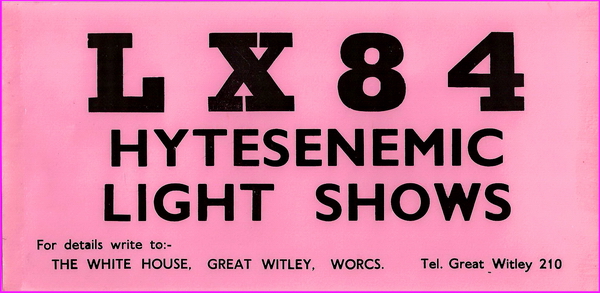 |
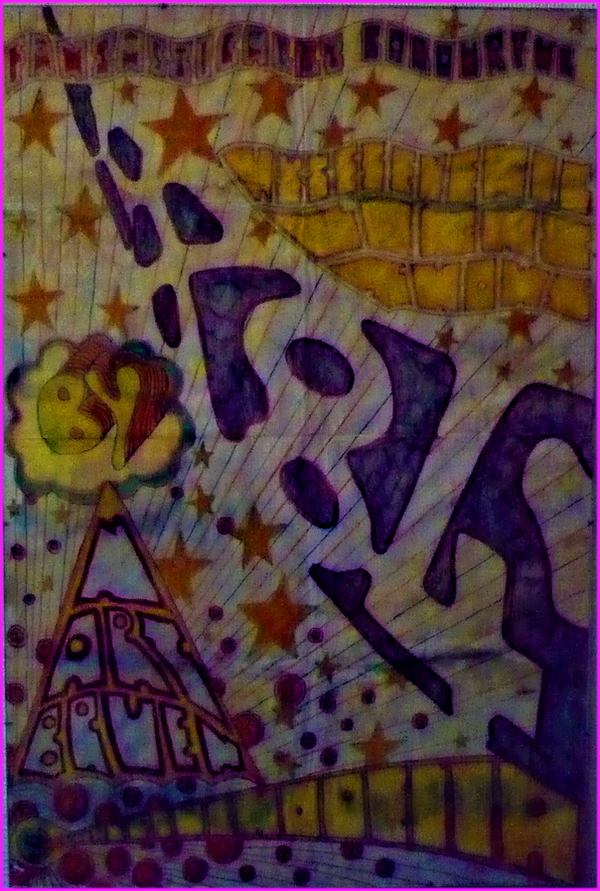 |
| The LX84 poster is the only one we had and was hand-drawn by Dream Circus Posters Inc of 1269 Pershore Road, Birmingham. |
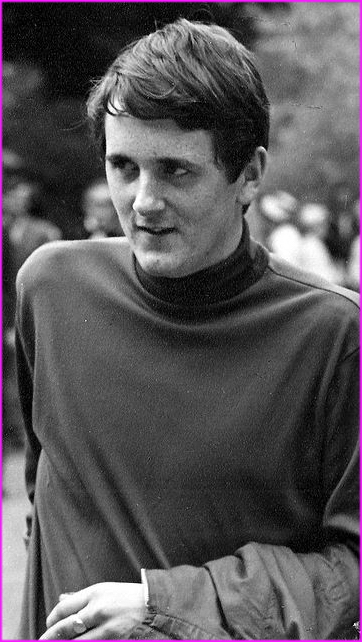 |
N Art Bruen in the 'Summer of Love' - 1967 |
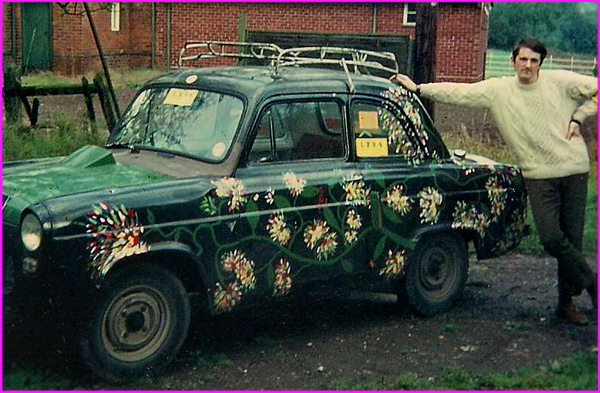 |
LX84 'Flower-power' car from 1967 |
| I thought it might be of interest if I set up the remains of the LX84 equipment - as it would have been in 1968 when I stopped 'showing'. Everything in these photos is from that time. The Aldis 1000 is fitted with a Meccano motor for the colour wheel, as is the Overhead. Tanks and glass slides are stacked against it and one tank is in position - the tubes for air/ink introduction. The Black-slides projector is auxiliary and the slides themselves original surviving ones. Inks are Winsor&Newton drawing inks; there are other substances in glass jars, and medical liquid-paraffin is used as the 'oil'. The Overhead is an Elite Viewrite, set up for clock-glass effects. The extra-concentrating lens to achieve long distance is fitted inside the box, under the Fresnel lens, and a glass sheet protecting that. |
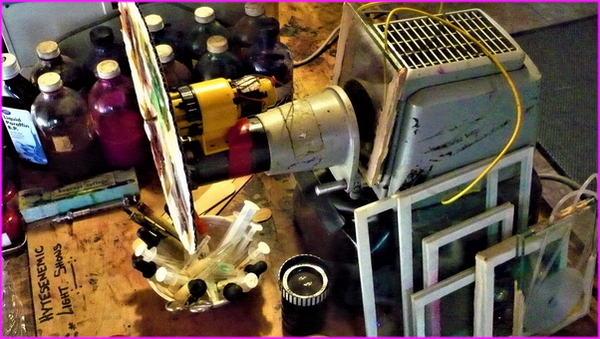 |
 |
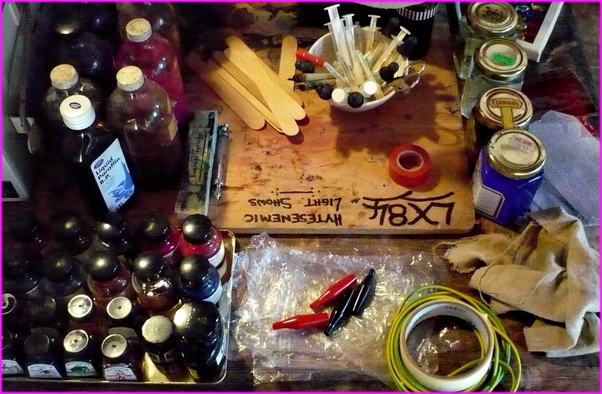 |
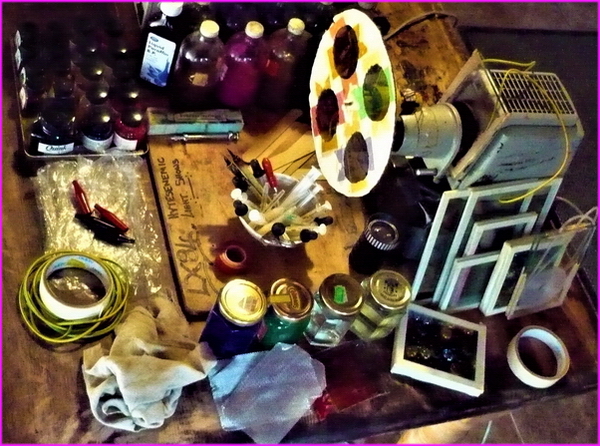 |
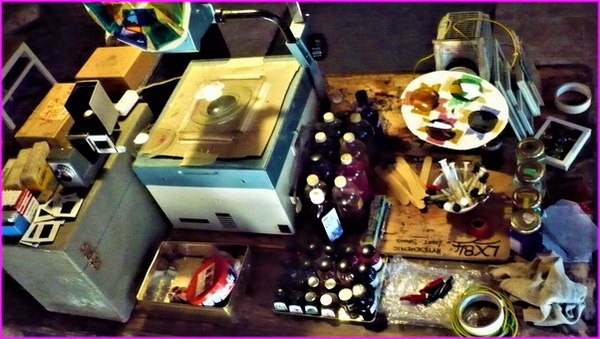 |
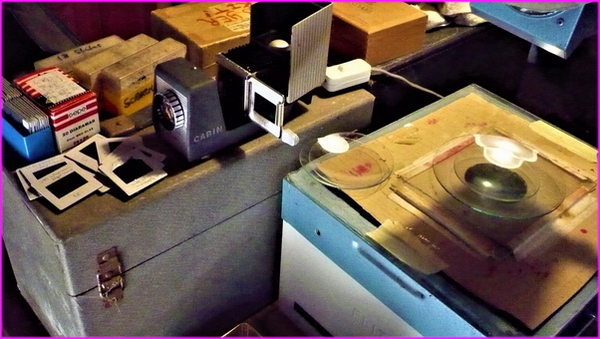 |
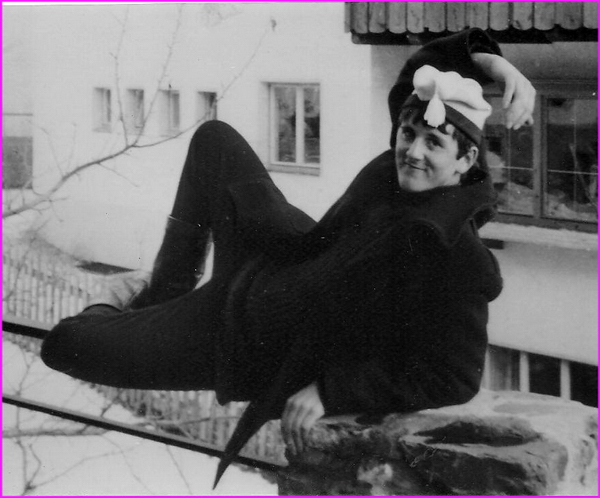 |
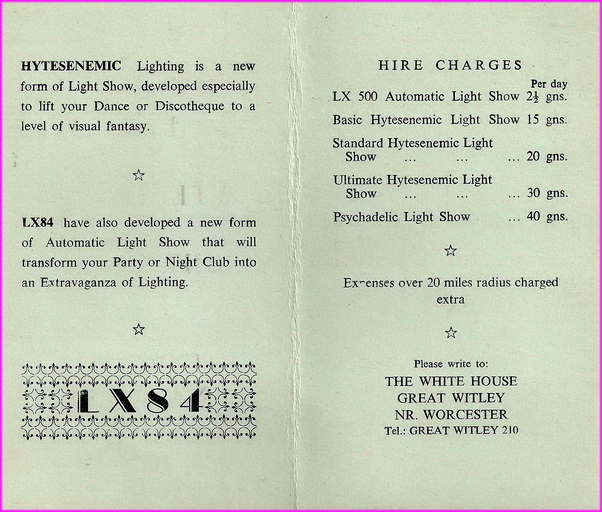 |
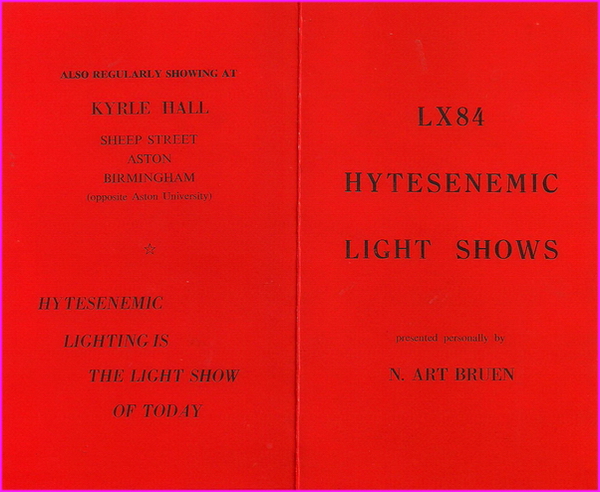 |
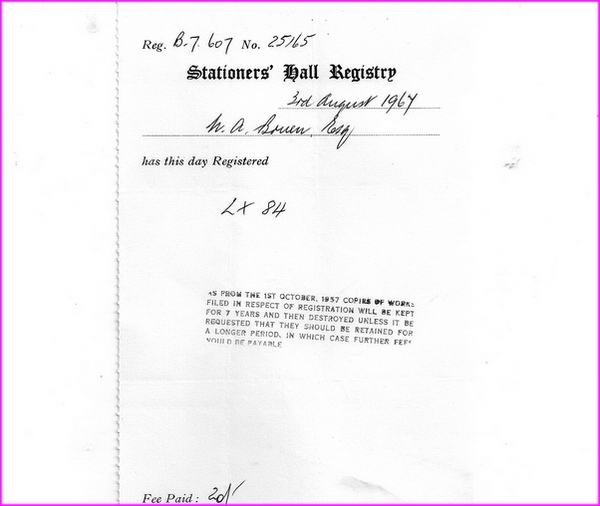 |
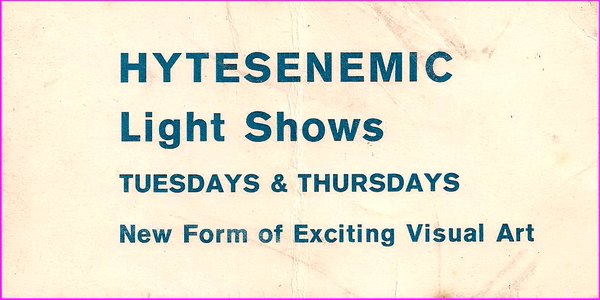 |
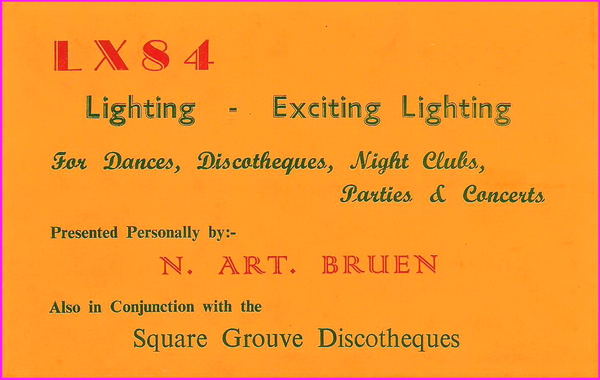 |
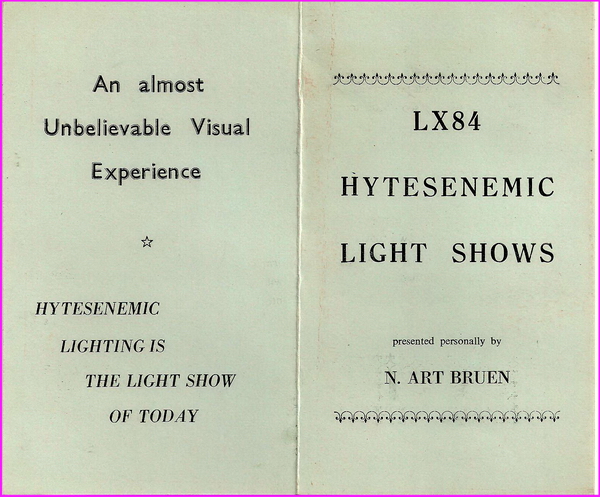 |
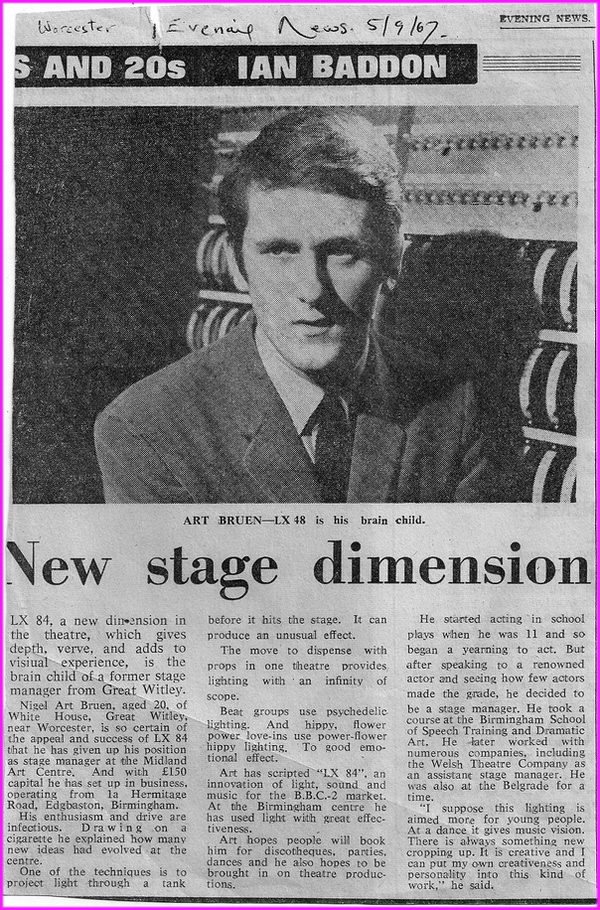 |
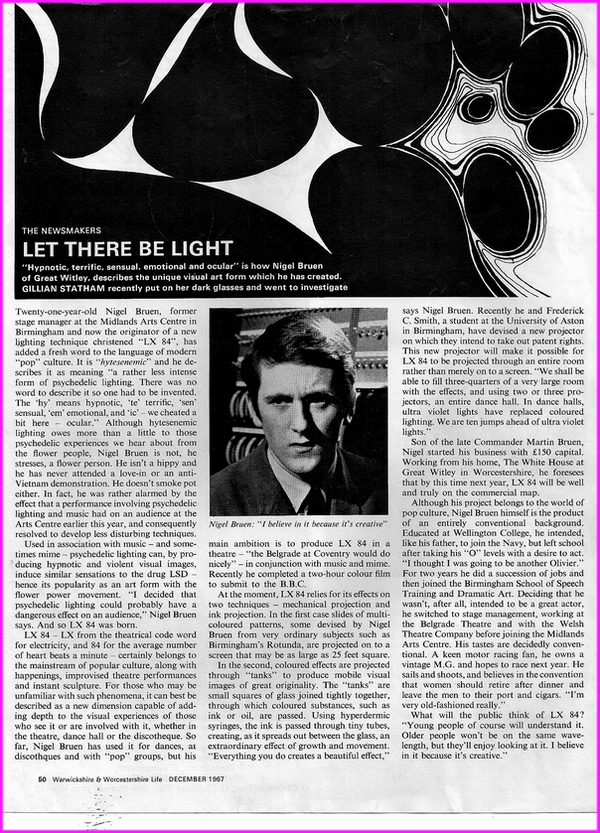 |
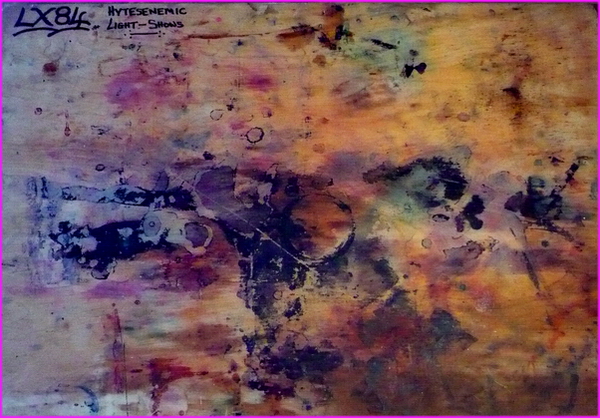 |
The work-board was used for the entire six months of LX84's existence and, contrary to most people's belief that everything became very messy, shows how little ink we spilled in the process. Ink cost money. |
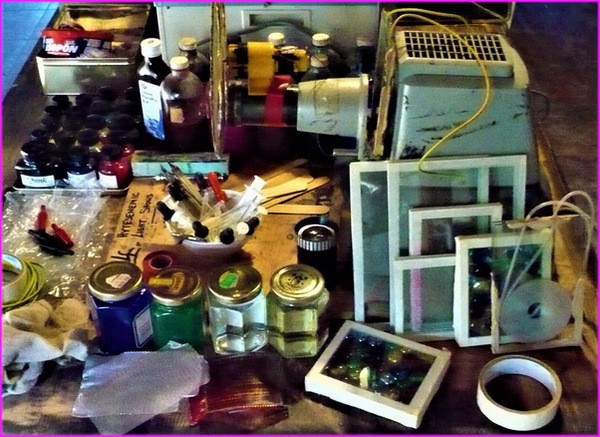 |
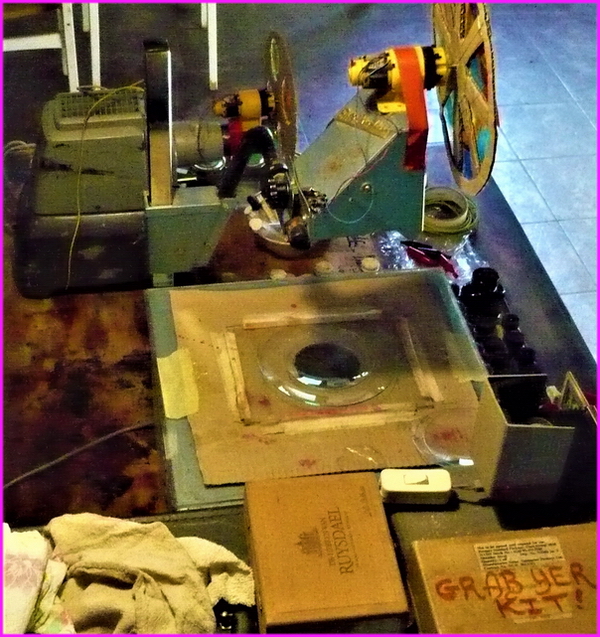 |
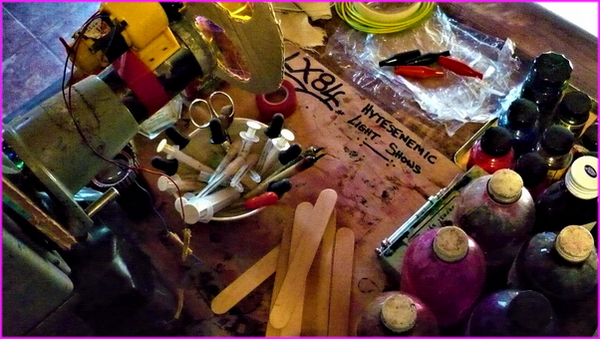 |
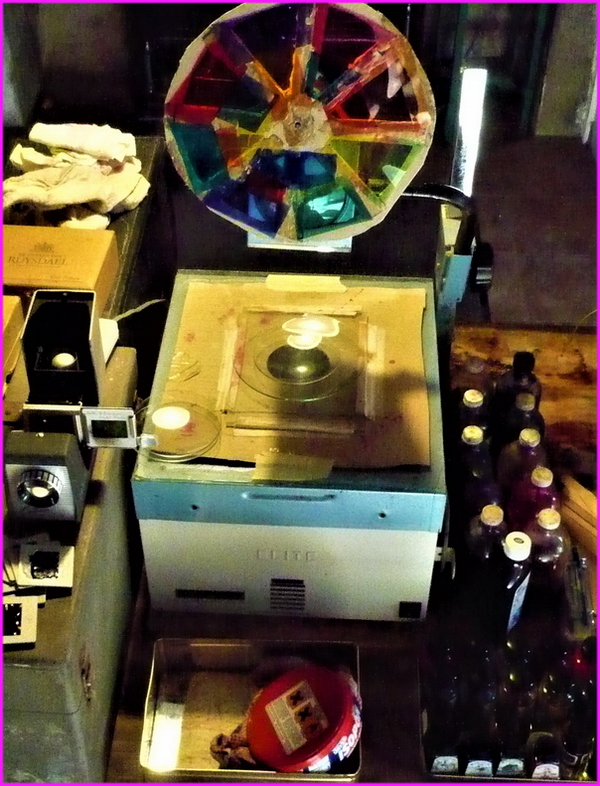 |
Black Slides The nature of light-shows being intrinsically self-destructive, there are few examples of its original form left in existence, except the occasional and rare film clip of the day. |
